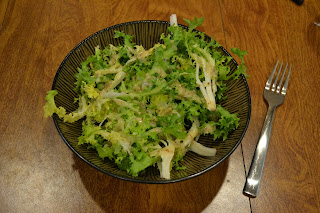 |
| Just look at that. Doesn't that look delicious? |
I requested Brian use the cilantro in one of my favorite dishes, Cilantro Lime Beans. Cilantro pairs brilliantly with lime. The two are basically a culinary crime-fighting duo.
 |
| This is the only superhero pose I can reliably draw. |
This recipe needs to be planned in advance, as the beans generally need to soak overnight, but beyond that it is a very simple recipe. In addition, you get easy meals for the next few days because this recipe keeps well, and makes a lot of leftovers. Lunch the next day? Bowl o' beans. Don't have time to make dinner? No problem, you've got beans!
Cilantro Lime Beans:
Ingredients:
A lot of pinto beans
Cilantro
Lime juice
Steps:
1. Follow the instructions on the bag of dried beans for hydrating your beans. Add a little lime juice and cilantro to the water when you let them soak overnight.
2. Continue to follow cooking directions on bag of beans, adding more lime juice and cilantro.




























